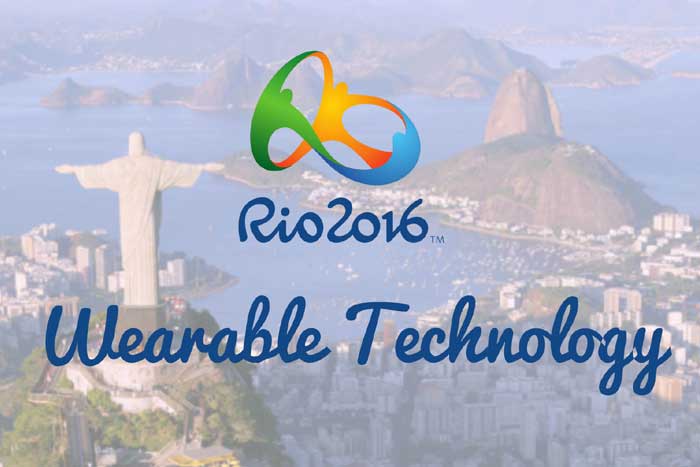Wearable tech is playing a key role in the world of sports globally. The fabric sensors are great when it comes to measuring movements in sports. All you need to do is simply invest in a good device that will give you the desired results. The article gives a clear indication on the extent to which wearable tech will boost the performance of US Olympic team in Rio 2016.
1. Athletics
Athletes both in track and field require sensors that can actually be fitted in their garments while giving measurements of motion with accuracy. The sensors are light in terms of weight and are connected to Bluetooth. Whenever the athlete moves, the sensor also stretches, making the android app display a motion feedback. The fabric sensors may as well be sewn, clipped or glued onto the garment. The fact that fabrics can be finished in a wide range of options makes the fabric sensors quite attractive to the wearable tech industry.
The smart attire will enable the athlete improve on their technique to avoid injuries by simply capturing the body movements.
2. Boxing
Around four years ago, the Olympic dream of Tommy Duquette was in tatters. This happened after he joined the boxing trials of USA. For some reason, he seemed destined to experience victory while representing his mother country in 2012 games in London. However, he got defeated at the 3rd level try. With his scores, the judges took 2 more scoring metrics in order to split the fights. When compared to football, it is similar to losing on penalties.
The loss made him channel his attention to wearable devices. This was for the purpose of helping the subsequent generation of Olympians to be a step closer to winning. He played a key role in cofounding Hykso, which is responsible for making the sensor that calculates the total punches thrown and the speed of each punch.
This device is worn inside the wraps of the fighter and uses accelerometers (2 distinct ones) with a gyroscope for a 3D motion tracking. After a workout it enables fighters to see any kind of improvement in terms of volume and speed.
3. Cycling

The United States Olympic Committee has secured yet another wearable tech device, the Solos Smart Eyewear, designed for the cycling team explicitly. It is a pair of sunglasses that are of high quality and has a heads-up display smaller than the pupil of a human. The display was developed years ago by Kopin Company, a former contractor for the US Defence.
The display is situated directly in the cyclists eye line to allow them see key metrics for instance speed, distance, power, heart rate and even more data from other sensors connected to it. The display also is transparent causing no obstruction of the view. It’s tiny enough too, that even a small gaze adjustment will make the heads-up display to disappear. This helps clear the road ahead of the cyclist allowing them to keep their eyes on their path without need of looking down on the bike’s computer and as such also prevents them from being distracted.
Additionally, the team coach is also able to set specific goals for the cyclist to follow so that they know whenever they are ahead or behind and by such, they are capable of adjusting their speed, power or cadence to match the indication by the coach. Sarah Hammer, a double silver medallist in the London Olympics, believes in the Solos tech, which she hopes will help her attain a podium finish in the Rio Olympics.
4. Swimming
It is without doubt that fitness trackers have taken to the pool. 2ith a field so flooded with many devices, it’s important to have a superior fitness device for swimming. Among the wearable, which prove helpful include the Garmin Vivoactive HR or even the TomTom Spark. These devices will help swimmers deal with their ad-hoc plans and also display other information on screen such as time, distance, temperature, speed and strokes.
5. Diving

Waterproof water proof sensors are available for divers which helps indicate not only how high they get to jump but also how long it takes them getting into their first spin. By this, divers stepping out of the pool are able to see on a screen all the data points they are after which is a massive boost in their learning. This will also raise their body consciousness automatically for better performance
6. Football
The beautiful game of soccer definitely leaps the benefits of wearable technology devices for improved performances on pitch as a team or even individually. It also improves supporters experience.
There have been several advances of the wearable tech in the pitch including player-tracking systems where sensors are built on players clothing for monitoring conditions of players. The STATSports Viper Pod System for instance is able to monitor many metrics of a player such as speed, distance, acceleration, heart rate and step balance. Data from such devices will help keep an eye on individual performances by managers or coaches.
Conclusion
The above smart technologies will prove themselves in the Rio Olympics. Events definitely will be hotly contested to smallest possible margins, and as such may require even the tiniest legal edge to leap to the top of the podium. Smart tech use will not only be helpful in the above sports but also in others including water-sports, gymnastics and fencing.


